#slovakian culture
Text
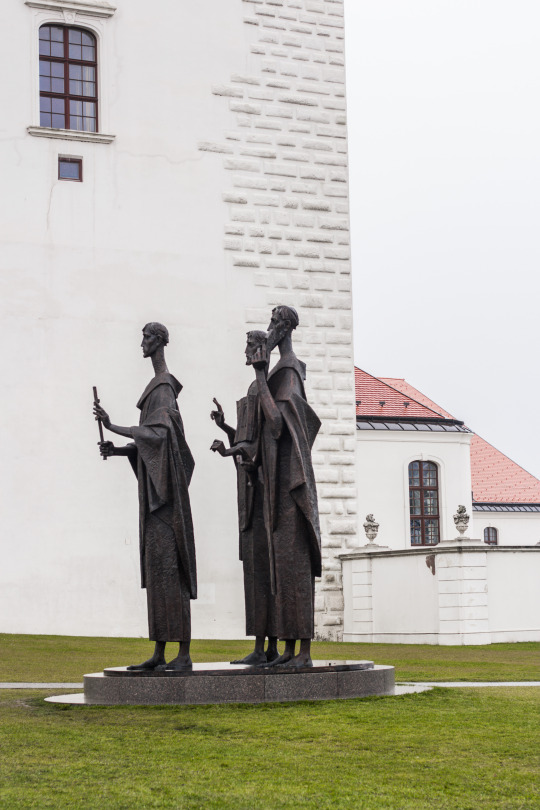
Hrad, Bratislava, Slovakia.
#slovakia#slovakian#slovak#slovensko#bratislava#slav#slavic#europe#central europe#slavic culture#slavic folklore#statue#art#european#culture#visit#trip#50mm#religion#christianity#civilisation#hrad
30 notes
·
View notes
Text

Uncovered by a Slovakian farmer ploughing his land in 1930, this figurine is called the Venus of Moravany.
She is made from a mammoth's ivory tusk circa 22,800 BCE, from the Gravettian culture.
#Venus of Moravany#Slovakian#mammoth tusk ivory#22800 BCE#Gravettian culture#Goddess#ancient ways#sacred ways
4 notes
·
View notes
Text
Besides impostor syndrome the main reason I'm just not cut out to study what I'm studying is that after a conference all my eastern european/central asian friends say "let's go get a drink!" And I go with, not knowing that their idea of "getting a drink" is straight vodka out of water glasses for five straight hours.
Anyway this is how I end up at 4am eating a big mac.
#i think i hold my alcohol better than most#and i can drink straight vodka and appreciate it with the rest of them#but god my slovakian and polish friends are on another level#i may be eastern european by descent but im western european by culture and good fucking god just give me a beer please#to caveat by 'hold my alcohol better than most' im a 5"3 woman who doesnt eat at all
3 notes
·
View notes
Note
to be fair I don’t think the state of Palestine existed back then? Like obviously Jesus was a Jewish person born in what is now Palestine and used to be Judea-> Jesus was a Jewish Palestinian isn’t exactly inaccurate. I think the level of vitriol against it goes beyond “hey this area actually went by this name when x figure was born” like I don’t think we’d be having this much discourse over calling a historical figure Slovakian when they were actually born in the state of Czechoslovakia
Well to be honest, it doesn't really matter what it was "called" back then because it doesn't change anything about the modern settler-colonial regime, but I will say a lot of historical discussions are a reflection of what we find valuable in the modern day and how we understand history is from our lens of today's understanding of "nations" and "states." Back then, no state really existed in the sense that we understand states to exist, but people *did* live on that land who developed Palestinian culture to what we know today. That's just how cultures work, over time.
But the discussion of "Jesus is Jewish, not Palestinian" is definitely a reflection of modern day understandings of Palestinian and Jewish identities and not an actual examination of history or how people identified back then, or even 100 years ago. Which again, I think your sources will change depending on where you research and who you ask about information from that far back. Western sources might give you different information from, for example, Palestinian historians. I'm just not giving an answer on that specific thing just because I don't know and personally don't super care in the context of the modern discussions of identity.
Personally, I think its more telling that people see a divide between "Jewish" and "Palestinian" historically when the people of a land didn't really divide themselves like that and instead base their identities on divisions manifested through Zionism, which is a settler-colonial project.
#yeah so like it doesn't really super matter what the land was called#the people back then still all identified under the label of that land#all together#not based on other identities that somehow separated them
48 notes
·
View notes
Note
Hi sam!
If you can, could you do juraj slafkovsky as a bf?



boyfriend!juraj headcanons

bf!juraj who purposefully puts things on the top shelf so you have to ask for his help to reach things
bf!juraj who will always be the big spoon but also loves to be cuddled after a rough game
bf!juraj who while he isn't the most talkative shows his love in other ways like physical touch and acts of service
bf!juraj who is very protective over you
bf!juraj who calls his mom so she can teach him how to cook Slovakian food for you
bf!juraj who teaches you Slovak so when you meet his parents you can talk to them (and because he thinks you speaking his native language is hot as fuck)
bf!juraj who calls you when he's on the road because he knows you fall asleep better when you're on the phone with him when he can't be there
bf!juraj who loves seeing you in his clothes because his t-shirts are basically a dress on you (let's be honest here this man is massive)
bf!juraj who tries his best to help you with your homework (even though he has no idea what's going on)
bf!juraj who comes over after every home game and road trip so you can wash his hair and give him a scalp massage
bf!juraj who enjoys introducing you to his teammates almost as much as they enjoy chirping him for how much he talks about you
bf!juraj who introduces you to arber and cole before everyone else because he knows they'll love you almost as much as he does
bf!juraj who tries to make you coffee in the morning (but ends up failing because he can't figure out the coffee machine)
bf!juraj who brings you lunch when he gets out of morning practice
bf!juraj who tries new foods from your native country because he wants to embrace your culture just as much as you've embraced his
bf!juraj who is the one who suggests a couples costume for halloween (it's clark kent and lois lane)
bf!juraj who loves it when you trace random shapes on his skin
bf!juraj who only wants you to patch him up after he gets in a fight
bf!juraj who will not hesitate to fight someone who says something bad about you
bf!juraj who while he's subtle about it sometimes, loves you no matter what

i hope you all enjoyed the first installment of boyfriend! headcanons: nhl edition! i love juraj personally so i hope this does him justice. have a good day/afternoon/night wherever you are and mwah!
xoxo, s.m.
20 notes
·
View notes
Text
The election earlier this month of the Russia-friendly populist Peter Pellegrini to president of Slovakia over the pro-Western candidate, Ivan Korcok, has gifted Moscow another collaborator in the EU, and thus dealt faltering Ukraine a further blow as it struggles on the battlefield. The new president will solidify the power of his close political ally, Prime Minister Robert Fico, who opposes sending military aid to Ukraine, and hand Hungarian Prime Minister Viktor Orban a more solid pro-Russia ally in EU and NATO decision-making processes.
The campaign’s shrill tone, dominated by anti-Ukrainian and pro-Russian disinformation posing Korcok as a U.S. lackey and “candidate of war,” is not just another case of dirty electioneering in Central Europe. It is also the result of Russia’s intervention in Slovakia’s media space and politics, which experts say ramped up significantly during the campaign’s final weeks. It was another stark warning ahead of European parliamentary elections in June that Russian digital propagandists and their proxies are intent upon—and capable of—swaying elections within the EU.
The contest for the Slovakian presidency might at first glance seem like a marginal spectacle. In the Central European country of just 5.4 million, the presidency has few powers, the most consequential being a veto over new legislation—and even that can be overridden by the parliament with a simple majority. Yet for the past five years this post has been held by the progressive-minded environmental and human rights advocate Zuzana Caputova, who, when elected in 2019, many saw as a bright spot in Central and Eastern Europe, a region where populists have thrived. Perhaps her most important work—and evidence of the enormity of the popular figure’s decision not to run for reelection—unfolded in the last six months. Despite her limited reach, Caputova acted as a check on Fico’s three-party coalition, for example by challenging the government’s overhaul of the criminal code.
Korcok, a retired diplomat who was foreign minister from 2020 to 2022, would have been an able successor, observers said. And he entered the race in pole position after winning the first round of voting in March with 42.5 percent of the votes, compared to Pellegrini’s 37 percent.
But a campaign featuring a barrage of pro-Russian disinformation could have been the lever that turned the result around so dramatically: Pellegrini captured around 53 percent, while Korcok trailed woefully with almost 47 percent. Russia’s footprint was all over the election campaign, said Slovak observers, and, as it did in last year’s parliamentary elections, Russia’s machinations may well have swung the vote to its favored candidate.
“Russia’s impact was immense and influential,” said Eva Mihockova of the Bratislava-based think tank Slovak Foreign Policy Association. “The lies and ridiculous falsehoods on dubious websites and social media blasted Korcok as the candidate of war and a dangerous free-market liberal,” she said. “The influence of Russia is obvious, even though there’s no evidence yet that these media are actually paid by Moscow, although there is big suspicion that they are. They certainly take a line that reflects Russia’s interests.” Mihockova said that much of the disinformation comes indirectly through Slovak proxies rather than directly from Russia, in contrast to last year, when Slovakia expelled a Russian diplomat for meddling in the parliamentary campaign.
“Since the pandemic, the pro-Russia, conspiracy-theorizing, so-called alternative media have been and are instrumental in changing the political landscape here, as well as the language and culture,” said Juliana Sokolova, a Slovak poet and philosopher. “They are listened to by lots of people and accepted as true.”
The pro-Russian internet platforms and social media channels, said Slovak experts such as Dominika Hajdu of the Bratislava think tank Globsec, threw their support demonstratively behind Pellegrini after the first round. The websites—such as Hlavne Spravy, ExtraPlus, InfoVojna, and others—reiterated the Kremlin line pretty much verbatim, she said. Hlavne Spravy’s Telegram account is rife with posts about LGBTQ perversion, Washington’s aggressive foreign policies, NATO’s expansionist aims, the NATO-U.S. bombing of Serbia in 1999, and of course the war in Ukraine itself: the oppression of the Russian minority in Ukraine, NATO hawkishness, and the far right in Ukrainian society and politics. Some of the Slovak websites’ news bulletins simply copied, translated, and pasted articles from NewsFront, Hajdu said, referring to a Crimea-based disinformation and propaganda outlet that works with Russia’s main security agency, the FSB.
According to Gerulata Technologies, a Slovak start-up specializing in hybrid threats, the thicket of pro-Russian media is complex and intransparent. There are far-right, far-left, and populist politicians who spread pro-Russian propaganda out of conviction, it said, as well as disinformation media outlets that are sometimes directly connected to Russian interests and others, like the Slovak branch of NewsFront, that are Russian state-controlled trolls and proxies.
The analyst Michaela Ruzickova said in the two weeks before the vote, the pro-Russian narratives reached a crescendo. Even more so than in July last year, Ruzickova, working for the think tank Warsaw Institute, found that “to achieve its goals, the Kremlin uses not only its own resources (embassies, spies, oligarchs), but also local actors who are willing to cooperate and spread Russian propaganda for various incentives.” Ruzickova argued that “the multiplication of Russian influence in Slovakia is facilitated by domestic sympathizers and disinformation actors who willingly adopt the content of pro-Kremlin channels, as well as the official positions of the Russian military and political establishment. Slovak disinformation actors are thus deliberately helping Russia to legitimize its policies and discredit Ukraine, the West, and democratic and international institutions.”
The most pronounced example of this was the way that, in the aftermath of the first-round vote, Slovakia’s pro-Russia media outlets and proxies energetically perpetuated the disinformation that Korcok was the candidate of war who would reinstate military conscription and send Slovak soldiers to Ukraine to fight for Kyiv. They charged that Korcok was a U.S. and NATO puppet who put the interests of the EU and the Atlantic alliance above those of ordinary Slovaks. In fact, Korcok never said this, nor does the Slovak president have the power to send anyone to war. Fico joined in the cacophony of Russian tropes, calling Korcok a “warmonger.”
There is evidence across Central Europe of Russia investing in disinformation channels much like the Slovak websites and illiberal right-wing parties. On March 27, the German magazine Der Spiegel and the Czech Deník N reported that politicians from Germany, France, Poland, Belgium, the Netherlands, and Hungary received payments from Voice of Europe, a portal owned by a pro-Russian Ukrainian oligarch, to spread Russian propaganda in advance of the European Parliament vote. The Czech government slapped sanctions on the platform for promoting Russian interests and covertly financing candidates for the European Parliament, which caused it to cease operations. Voice of Europe had more than 180,000 followers on Twitter/X, according to the BBC.
Matus Kostolny, chief editor of Dennik N, finds it hard to explain the Slovaks’ favorable opinion of Russia after the Soviet Union’s 40 years of postwar occupation of Slovakia and the invasion of Ukraine—in stark contrast to neighboring Czech Republic and Poland. But he underscored that the Russian propaganda in Slovakia has more voices than just “fake journalists” on the internet. “Slovakia’s politicians, particularly in the government parties, regularly mouth this language of Russia and repeat its topics and propaganda. This is more powerful than anything coming directly from Russia.”
“It’s not that Slovaks want to live in Russia, nor do these [pro-Russian] politicians want the Soviet Union back in Slovakia,” Kostolny told Foreign Policy. “But they use it to attack their liberal opponents who have cracked down on the corruption and put their allies behind bars.” The Slovak president, Kostolny noted, has the authority to appoint justices to the Constitutional Court and to issue pardons—two critical levers for reversing the fight against corruption. Kostolny said he wouldn’t be in the least bit surprised if Pellegrini begins pardoning some of the dozens of convicted figures from the ranks of the government parties.
But Slovakia’s new rulers have shown that they will practice what they preach. After the Fico government took office last year, Fico cut off Slovakian military aid to Ukraine and then claimed earlier this year that Ukraine stood “completely under the influence and control of the USA” and is therefore “not an independent and sovereign country.”
Sokolova said that another critical component to the wins by Fico’s party and Pellegrini was the long arm of Orban. The ethnic Hungarians living in Slovakia compose about 8 percent of the population and vote in both Slovak and Hungarian elections. They vote overwhelmingly for Orban’s Fidesz party and tend to chafe under the rule of Slovak nationalist politicos.
But Orban sees an alliance with Slovakia’s populist government, which includes the ultranationalist Slovak National Party, as a better payoff than fighting rhetorical battles over bygone injustices. “Orban mobilizing voters in southern Slovakia via his media for Pellegrini was absolutely decisive,” said Sokolova, an ethnic Hungarian living in southern Slovakia. “The voter turnout [for Pellegrini] was massive in [ethnic] Hungarian towns.”
Mihockova said the ethnic animosity between Slovaks and Hungarians has mostly evaporated in favor of other enmities. “Slovakia’s nationalists and autocrats found that you can win more voters with the hate figure favorites of the Orban regime—such as Brussels, the U.S., and immigrants—than with traditional ethnic nationalism,” she told Foreign Policy. “The Slovak populists see Orban and Fidesz Hungary as a role model.” And, as for Orban’s about-face, “he needs partners,” Mihockova said.
Now, with Slovakia’s populist president and government in place, he has one more partner in his crusade to flip the European Parliament and abandon Europe’s defense of Ukraine.
13 notes
·
View notes
Text
[ 📹 Scenes from the moments immediately following the shooting of Slovakian Prime Minister Robert Fico outside a government building in the village of Handlova, northeast of Bratislava.]
🇸🇰 🚨
SLOVAKIAN PRIME MINISTER ROBERT FICO SHOT IN ATTEMPTED ASSASSINATION
Slovekian Prime Minister, a vocal opponent of the EU's policy of arming Ukraine in its war with the Russian Federation, has been shot following an attempted assassination after a meeting of the government at a location northeast of Bratislava.
According to reports, the Slovakian Prime Minister, Robert Fico (59yo), was shot in the stomach following 4 gunshots fired in his direction while outside of the House of Culture in the town of Handlova, 150km northeast of the capital.
The suspect was immediately arrested and detained, while police have cordened off the scene of the crime.
A helicopter was dispatched to transport the wounded Prime Minister to a nearby hospital, with few updates on his condition since.
#source
#videosource
@WorkerSolidarityNews
#robert fico#fico#slovakia#slovakia news#eu#european union#eu news#europe news#european news#politics#news#geopolitics#world news#global news#international news#breaking news#current events
13 notes
·
View notes
Note
Hi! I’m an American hetalia fan and I have been LOVING your stuff about Hungary and learning about your history! I do have a question though: what is Hungary’s relationship with Slovakia? Cause if Slovakia’s territory is entirely made up of what Hungary lost from Trianon, are they enemies? Do they get along now? I see Slovakia and Hungary are in V4 together, so are they friends now? Sorry for the long ask, I love learning about Hungary from you!
Hello, I'm so happy you love the things I do! I already wrote a post about the relationship between Slovakia and Hungary, you can check it out below:
It is true, that Slovakia is made of the part cut out from Hungary which is why extremists on both sides are hating each other up to this day. Some Slovakians still think that Hungary would jump on the idea of reclaiming the lands lost, but even Hungarians are rational now: things are done and cannot be changed so why stir up trouble?
The Hungarian government tries to be friendly with all neighbouring nations, including Slovakia, while also wants people to stay aware of the fact that Hungarians do live outside the borders of Hungary, and they have every right to speak their own language and keep their culture alive - because these are the main issues nowadays.
The V4 alliance is mainly about economical strategies, their recent political approach is relatively new and still not homogeneous. The main members don't always agree with each other but there is an attempt to give support when the West is trying to force authority on either one.
So I would say it's a strained but mutually beneficial relationship which is heavly influenced by how the acting government speaks about the other nation in general.
Thanks for the question!
#hws#aph#hetalia#hetalia hungary#hetalia slovakia#hws hungary#hws slovakia#hungary x country series#q&a
40 notes
·
View notes
Text
Okay wait, is this a cultural difference? Just watched a really old Slovakian movie like 1980 and the amount of brotherly and family touching and hugging was intense? So cute and wholesome and not questioned at all? Cdramas also don't seem to shy away from friendly touches and snuggles between men from the gifs I'm seeing? (Started following few cdrama centric blogs to explore their potential for watching). But you go American way and it becomes rarer and more "you almost died so here is a hug per season" instead of "we are close so we like snuggling". Like the amount of cold distance between the friends in Suits was downright frustrating. So many moments that would invite hugs, but no, they are stepping away from each other, I'm shocked the camera still got them in one shot. Or it's a taste thing? Grr
#writeblr#spilled ink#bromance#suits#friendship portrayal#I'm telling you spilled ink original posts are going to be my most frequent type of post this year
72 notes
·
View notes
Text

Svätoluk, Bratislava, Slovakia.
#slovakia#slovakian#slovak#slovak tumblr#slovensko#bratislava#bratislava city#visit bratislava#europe#central europe#slavic culture#slavic folklore#statue#sculpture#art#art photo#art photography#art photographer#city#city view#cityscape#view#danube#winter#canon#50mm#city photography#x2
16 notes
·
View notes
Note
you mentioned 'czech representation in hunter x hunter', and i'm curious about what you mean? i'm not being facetious btw, i'm just curious which characters are czech-coded. i'm a big Hunter x Hunter fan so i love to learn small details i missed C:
oh dear i'm sorry for how long this post will be! there is not a czech like character as in anyone being czech coded. it's more of some random inspiration from czech (and slavic overall) culture and it's fascinating to see because literally noone gives a fuck about czech republic.
anyway my Big Moravian HXH Theory:
there is (kinda) 4 czech things somewhat in the story and it's:
Alfons Mucha as in quite visible inspo for some character designs in the succession war arc (Lynch, Zakuro, Hinrigh, Camilla, Morena)
Leoš Janáček random cameo during Tserri's incelboy talk (a czech person's existence is canon in hxh)
Morena is the moravian/slovakian way of spelling the name of the slavic goddess of winter and death
Kakin most silent revolution that happened 30 years ago is literally velvet revolution (that happened 30 years ago)
Now the theory
Alfons Mucha is fucking beloved in Japan and Naoko Takeuchi literally used him as inpiration meaning Togashi absolutelly knows him

Alfons Mucha had giant exhibition in The National Art Center in Tokyo in year 2017 which consisted of The Slav Epic (gigantic painting of the history of slavs consisting both of mythology and real events). The exhibition happened during the 2017 hiatus which was before Morena was introduced (march 2018)
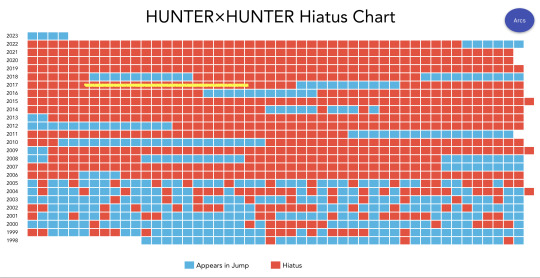
So my theory is that Togashi went to the exhibition, got very into some pamphlets/books about Mucha and slavic mythology.
Used moravian spelling of Morena because Mucha is moravian.
During that he found out about Leoš Janáček the czech (moravian again) composer who lived during the same time and the same places as Mucha (Mucha almost got a job as a church singer when he was teenager but the place was already taken by...teenager Janáček...bless South Moravia...)
Got into Czechoslovak history and that is how we got Velvet Revolution Kakin republic 1989
So yea this is czech representation as in me reading the Word's Most Popular Manga and seeing things only 20 people worldwide me including might relate to!!!
18 notes
·
View notes
Text
Only learning now that I've had to sell almost every sheep I've grown close to and helped raise, including ones bred with friends over Years to pair dairy traits with resilience........ had to sell to move on, so ultimately good, but deeply, deeply painful in a way it's hard to communicate. I hurt. A lot.
Anyways. Only now have learned that the culture who's 50% of my direct heritage, Slovakian, traditionally has relied on sheep milk and sheep cheese
I did not know this. I've felt drawn very viscerally to sheep, they are My Animal. But also to milking goats, and to the dream of milking sheep. Sheep just have been part of my identity for years. The ultimate goal of milking them and getting a lot of my daily calories from that felt Right and worth working towards. They just feel the Rightest as an animal to interface with, and I've worked with a lot of livestock and pets.
I wish. I don't know. I wish I'd have known a few years ago, and made the most of the incredible opportunities here knowing they were a cultural connection too. I've never even talked to my grandparents about it
I did make my grandma rabbit paprikash a few years ago (Slovak culture has some overlap with Hungarian, my other main genetic heritage). It opened up so many stories about her relatives in the early 20th century raising rabbits.
But I never thought to talk with her about sheep, and now she can't really talk much. The Thanksgiving I cooked that dish, she thought I was a different grandson she forgot, Cyril, not a trans grandkid, which worked fine for me honestly.
Missed moments. Missed anchors to your ancestral past. There are so many but this one feels a certain way tonight
I feel firmer in my conviction that this is a very temporary pause in raising sheep, necessary for the next step in my life. And I'm going to approach it differently going forward
I have a few bilingual relatives back in Slovakia to talk to and I'm not sure why it took cheese to realize how much I'm missing. But cheese has always been 1/4 to a wild degree of what my dad and I eat so maybe that craving makes sense now too! Feels silly. Still important!
Mountains are another thing that feel indelibly part of my body and spirit that I definitely did not grow up anywhere near ever seeing. Interesting to think about. My dad and I were talking a couple days ago about how the Cascades woke up parts of us we didn't know were there
57 notes
·
View notes
Text
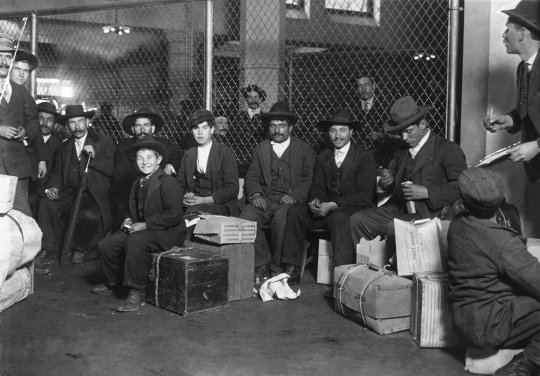
White immigrants weren’t always considered white — and acceptable
Italians, Greeks, Poles, Hungarians, Slavs and other European groups had to overcome prejudice over many years
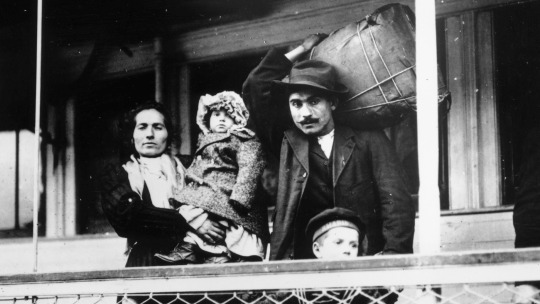
By Brando Simeo Starkey@BrandoStarkey
Who, exactly, is white?
The answer sounds obvious — we know a white person when we see one, we think. But when Italians poured into America in the late 1800s and early 1900s, they were not considered white upon arrival. A century later, though, when Teresa Giudice of The Real Housewives of New Jersey maniacally hoisted a table on national television, she did not do so as a member of a supposedly inferior people. No, she was a crazy white lady throwing furniture.
The story of how European immigrants during that era became white enlightens us on our current political realities. Italians, Greeks, Poles, Hungarians, Slavs and other European groups, at the time called “new immigrants,” sought to overcome their subordination by showing, through their behavior, to be deserving of being considered white.
In 1911, Henry Pratt Fairchild, an influential American sociologist, said about new immigrants, “If he proves himself a man, and … acquires wealth and cleans himself up — very well, we might receive him in a generation or two. But at present he is far beneath us, and the burden of proof rests with him.” They ultimately met that burden and crucial to their success was that they were not black and they actively helped in maintaining a racist society.
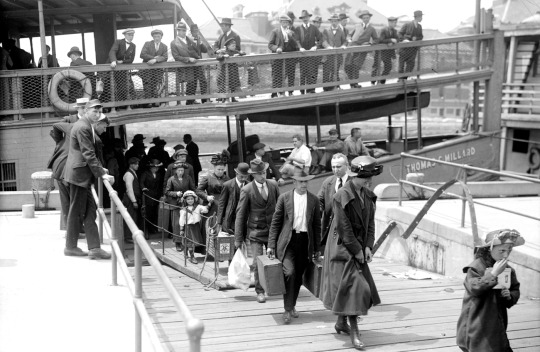
Newly arrived immigrants disembark from the passenger steamer Thomas C. Millard upon their arrival at Ellis Island in New York in the early 20th century.
BAIN NEWS SERVICE/INTERIM ARCHIVES/GETTY IMAGES
The influx of new immigrants led to apocalyptic predictions about the impending doom awaiting America — foreigners would impose their inferior biology, peculiar religious practices, and substandard ways of living onto this country, lowering an elevated civilization. Many held that they were not white, rather members of a lower biological order. The kinder view held they were simply culturally inferior — dirty, less intelligent, criminal-prone — but could assimilate.
Not being considered white led to new immigrant misery. Economist Robert F. Forester wrote in 1924, “in a country where the distinction between white man and black is intended as a distinction of value … it is no compliment to the Italian to deny him his whiteness, but that actually happens with considerable frequency.”
Greeks, for example, fretted about being mistaken for Puerto Ricans, mulattoes or Mexicans. J.D. Ross, an Alabama politician, dubbed himself the “white man’s candidate” and campaigned on Greek disenfranchisement. In Utah, Greek and Italian copper miners were classified as “nonwhite.” White workers in Steelton, Pennsylvania, refused to take “hunky jobs” — jobs traditionally held by Hungarians — even during the poor economy of 1908, preferring unemployment.
New immigrants had a choice — fight for inclusion into the white race or align with people of color, who they knew fared even worse than them. One Serbian worker said during the era, “You soon know something about this country. … Negroes never get a fair chance.”
They chose whiteness and sought to demonstrate their cultural and biological fitness. They soon learned, though, when whites said “prove yourself,” helping protect and expand white supremacy was considered convincing evidence.
They watched whites abuse blacks, mimicked whatever they saw and whiteness — the carrot they had long reached for — slowly came closer to their grasp.
Essayist James Baldwin frequently mused on how whiteness was made. How did whites become white? “By informing their children,” Baldwin wrote, “that black women, black men and black children had no human integrity that those who call themselves white were bound to respect. And in this debasement and definition of black people, they debased and defined themselves.”
As one Slovakian woman in Connecticut said, “I always tell my children not to play with the nigger people’s children, but they always play with them just the same … This place now is all spoiled, and all the people live like pigs because the niggers they come and live here with the decent white people and they want to raise up their children with our children.”
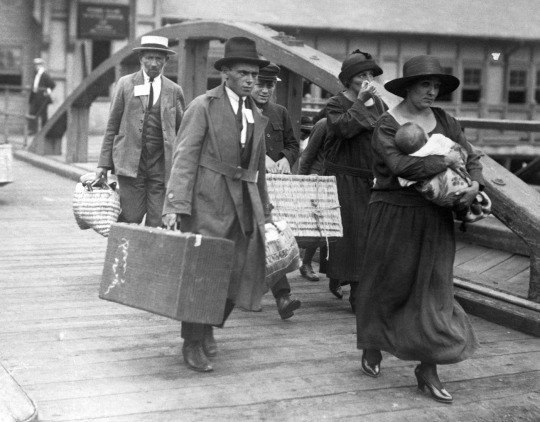
Ship loaded with immigrants, coming to New York. A Greek family embarking on Ellis Island to come to America.
GETTY IMAGES
New immigrants hungered for home ownership, even penny-pinching just to own property. Thus, when New Deal-era politics put home ownership at the center of the American dream by making more families homeowners, whites needed new immigrants’ assistance in making Negro-free neighborhoods.
In the early 20th century, new immigrants in many cities were more segregated than were blacks. By the 1950s, the opposite was true. With these new immigrants living in the same neighborhoods, intermarrying, attending the same schools, mingling, and, most importantly, committing racism against black folk, through successive generations, they became white.
As this tale demonstrates, whites have agreed to privilege themselves over nonwhites. Moral revulsion has compelled many whites to opt out of this agreement. Yet, some white Americans pin their hopes on whiteness, as did the new immigrants, and, therefore, the siren song of a politician promising to enhance the social and economic value of white skin seduces them.
The story of how new immigrants became white teaches us whites can look at people they once deemed their inferiors and consider them part of their team.
President Barack Obama remarked that racial advancement doesn’t proceed in a straight forward-moving line. Instead, moments of progress give way to regressions. He’s right. And whether white supremacy surges or wanes modulates this phenomenon.
I believe we will witness a moment of racial triumph in the future, and elation will overwhelm those longing for a racially fair-minded America. The next “whitelash,” however, can only be prevented if whites conclude that joining with nonwhite peoples of similar socioeconomic standing will bring them closer to happiness than seeking to protect white privilege.
The work to overcome white supremacy will exhaust the nation. Given the stakes, however, the work is worth pursuing.

#african#afrakan#kemetic dreams#africans#brownskin#brown skin#afrakans#african culture#greeks#puerto rican#america#usa#whitelash#immigration#anti immigrants#immigrants#european immigrants#europeans#western european#white supremacy#germans#german#swarthy#white immigrants#ellis island#nyc#new york city#slovania#slovanik#easstern european
17 notes
·
View notes
Text
Visiting the city of Bratislava
🇸🇰Activity title: visiting Bratislava with my family

🇸🇰Duration and time: 3 days
🇸🇰Type of activity: activity
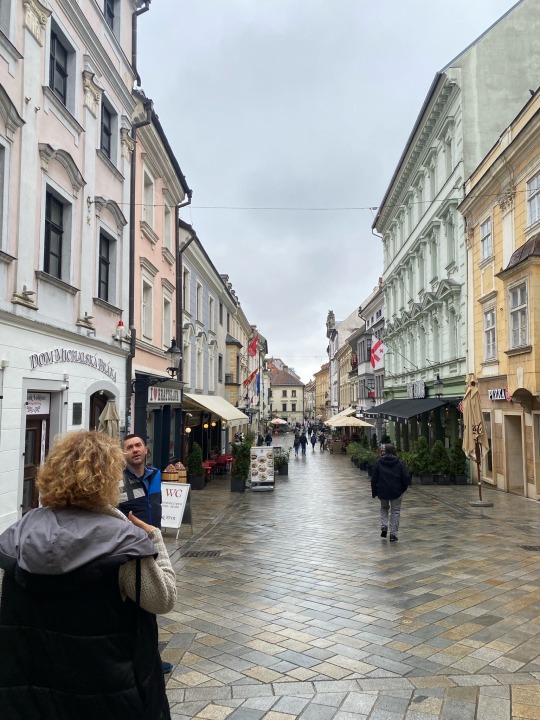

Activity description
🇸🇰During my autumn brake my family decided to take a trip to Bratislava. We visited all the historical and cultural monuments such as the Blue Church, The castle and the historical centar of the city. We also visited Slovakian flea market to try and get to know locals and their traditional food. We also went to a Slovakian pub to eat. While there we also took a roadtrip to east Austria and the nearby cities. On our way back we stopped at the oldest city in Hungary built during the Roman empire in first century AD. There, we ste the traditional Magari dishes like goulash.🇸🇰


Learning outcomes
🇸🇰Show commitment to and preservance in a CAS experience
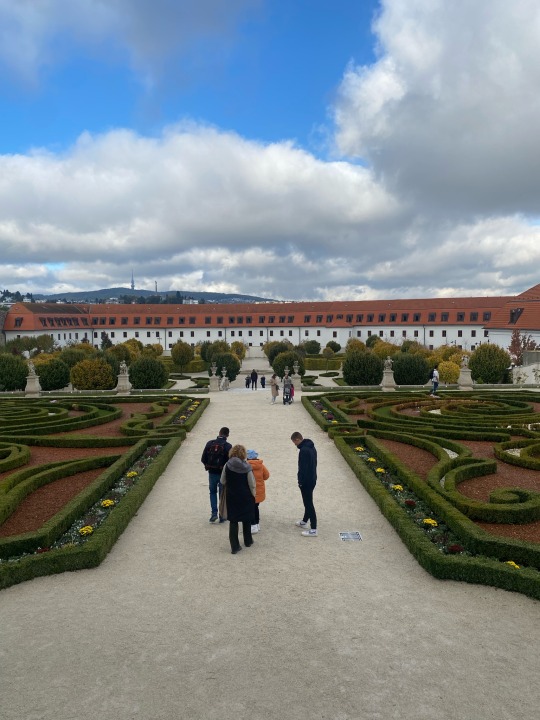
Reflection
🇸🇰Honestly, I didn’t like Bratislava as much as I did other cities I visited. Ot was just too peaceful for me. But it was an interesting trip still. I have never been to Slovakia so this was my first contact with their culture. It was interesting to see how similar our languages are even though we split up with each other a long long time ago.🇸🇰
5 notes
·
View notes
Text
Book Review: Impossible Escape (🇸🇰 Slovakia)
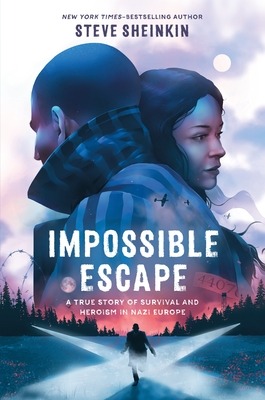
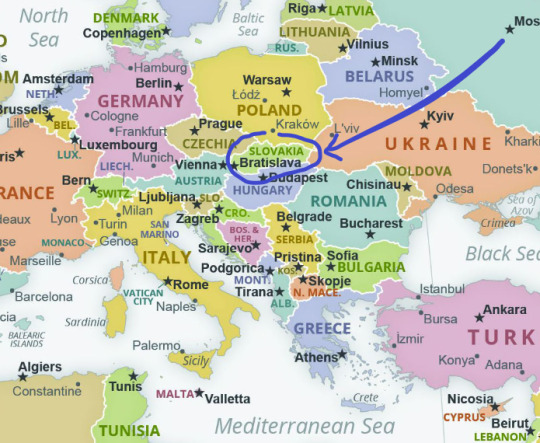

[image 1: book cover: in muted gray tones are two people's profiles, a young woman and a man with shaved head and striped coat. Below, a figure runs toward a forest with spotlights on them; image 2: a map shows Slovakia in the center of eastern Europe, with Poland to the north and Hungary to the south; image 3: the gatehouse at Auschwitz-Birkenau: a train track leads to a red brick structure]
Impossible Escape
Author: Steve Sheinkin
YA World Challenge read for 🇸🇰 Slovakia
Review
Before I picked up this book if you'd told me I'd be unable to put down a book set in Auschwitz, I might be a bit skeptical. While I've seen documentaries and had good college history professors, I'm also wary of the "Holocaust fiction genre" because it just seems... weirdly romanticizing. :/
Fortunately, this book is not like that. For one, it is not fiction (I didn't notice that when selecting it) and doesn't pretend to be a novel, but manages to be just as compelling as one.
The book tells the true story of Rudi Vrba, a Slovakian Jewish teen who made an "impossible" escape from the concentration camp with fellow prisoner Alfred Wetzler in order to tell the world about the horrors there. Their report would be known as the Vrba-Wetzler Report.
The book's narrative is engaging and detailed and lets us walk in Rudi's footsteps, without overdramatization. The perspective shifts between Rudi, with his early escape attempts in Nazi-allied Slovakia, and his childhood friend Gerta whose family attempts to hide in neighboring Hungary. At times the book pulls back from this personal narrative to show the bigger picture of what was happening in Europe at the time.
Most of the book takes place inside concentration camps, so I don't think I need to elaborate on the content warnings needed. However, the author presents these things frankly without delving into graphic details or gore, making it appropriate for younger audiences.
I also appreciate that Sheinkin brings the story into our present culture with Rudi's reasoning for why he chose to testify at a Holocaust-denier's trial many years later - that big lies should always be countered with truth - and the author's subtle suggestion that big lies still exist around us. "If a proof was needed that the mentality and danger of the Holocaust are still with us, it's right there," Rudi Vrba spoke of later genocides like Cambodia and Rwanda.
Impossible Escape tells an exciting true story relying heavily on Vrba's own interviews and talks. It is an engaging history lesson as well as an important warning of a danger still with us.
Other reps: Jewish
Genres: #non-fiction #historical #genocide #war
★ ★ ★ ★ ★ 5 stars
#book review#booklr#books and reading#holocaust#slovakia#impossible escape#steve sheinkin#ya world challenge#jewish#nonfiction#historical 20th century#genocide#war#europe
2 notes
·
View notes
Text
In her seminal book European Peasant Cookery, Elisabeth Luard called Romania “a kind of culinary Galápagos Islands.” She was referring to the merging of Nordic influences (as seen in various methods of preservation, including fermentation, fish-drying, and pickling) with an almost Mediterranean use of fresh vegetables and fruit and baking techniques. I feel her description might equally well apply to Ukraine. Sandwiched between Poland and Russia, with Belarus to the north, Romania and Moldova to the southwest, and Turkey a stone’s throw away across the Black Sea, Ukraine’s regional food is very diverse.
Besides, as its borders have been stretched and pulled, Ukraine has been exposed to plenty of other ethnic, religious, and cultural influences, which have been integrated into its cuisine, making it one of the most exciting food culture in Europe. Nowadays, you can find Transcarpathian villages where Hungarian, Slovakian, and Polish dishes live happily alongside the more usual fare of quintessentially Ukrainian borsch and varenyky. This mosaic of influences pervades every family. As a friend in Transcarpathia puts it, “My grandmother was born in Czechoslovakia, got married in Hungary, and died in Soviet Ukraine, yet she never left her village.”
Both Russia and the Ottoman Empire once encouraged people from neighboring countries, known as kolonists, to come and settle in Ukrainian territory. As a result, the southwest of Ukraine is peppered with Bulgarian- and Moldovan-style villages. And in the south, in the region of Kherson, there are also historically German and Swedish settlements. Lviv, in western Ukraine, and Odesa, on the Black Sea coast, as well as the whole region of Bukovina, used to be among the biggest Jewish hubs in Europe. To some extent, these pockets of different cultures remain today, and their heritage still resonates in various local dishes.
Olia Hercules, Summer Kitchens: Recipes and Reminiscences from Every Corner of Ukraine
64 notes
·
View notes